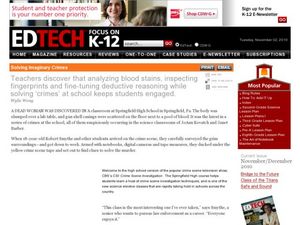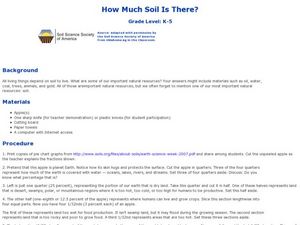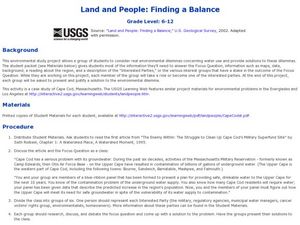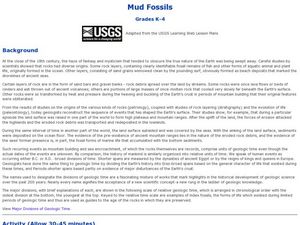Royal Society of Chemistry
Hazard Symbols
Starting in 2015, all chemicals must have a pictogram of the associated chemical hazards. A brain-building activity reviews four of the basic symbols found in a typical science laboratory. Through a fun puzzle, scholars apply their...
National Geographic
Genetic Markers: Connecting the Dots
Biology buffs simulate how genetic markers are passed among populations in order to understand how these markers can help anthropologists map human migration. A couple of volunteers leave the room while you walk the remaining learners...
CK-12 Foundation
Fish vs. Rose
Examine the science behind rates of diffusion. The video lesson and following interactive activity focus on the molecular components of different smells. Learners monitor the diffusion of each smell as they 'race' through a room.
Novelinks
The Martian Chronicles: Fishbowl Discussion
Ray Bradbury's The Martian Chronicles provides the text for a fishbowl activity. Class members to sit in concentric circles, with the center circle discussing the topics from the book, and the outer circle observing the participants.
Connecticut Energy Education
The Carbon Cycle Game
Have you ever wanted to be an atom of carbon? The lesson allows each student to be an atom of carbon in the carbon cycle. First, they follow through the cycle as it existed before human interference. Then, they try the same activity, but...
Acoustical Society of America
Good Vibrations
Visualize vibrations within the classroom. Pupils see the connection between sound and waves. The learners use a tuning fork in two different ways to demonstrate the waves associated with sound. Scholars see how the sound waves from a...
Minnesota Department of Natural Resoures
Tree Life
The life of a tree is the focus of a packet consisting of several activities all covering a different subject. Second graders measure shadows, make pinecone critters, write poems, count rings, complete a word search, play tree tag, and...
Virginia Department of Education
Mineral Identification
What's the difference between a rock and a mineral? And what properties are used to identify minerals? The first installment of a five-part series on earth materials and processes prompts young scientists to identify a set of...
Cornell University
Celebrate Urban Birds
Set up a 50x50 square foot area in a space at school and choose three days to go outside and observe the birds seen in a 10 minute span. The activity has learners tapping into their observation skills and creates awareness of the birds...
Magic of Physics
Rotating Sky
Ever found it difficult to observe the night sky with pupils because school takes place during the day? Host a stellar lesson using a detailed night sky interactive! Scholars view the apparent rotation of the sky from the comfort of the...
Bonneville
How Much Energy Do YOU Use?
Determine the power hog in the house. Pupils learn the difference between power and energy before participating in a hands-on activity. Using a power meter, pairs measure the actual power used for several household devices, estimate the...
Curated OER
Is Evolution Just Monkey Business?
Students examine the presentation of the theory of evolution in the science classroom. They define and discuss aspects of evolution, evaluate the presentation of evolutionary theory, and write a persuasive essay.
Curated OER
What Is Happening in Haiti?
Students discuss the 2010 earthquake in Haiti and empathize with the victims of the disaster. For this 2010 Haitian earthquake lesson, students learn about the history and hardship the country has consistently faced. They watch clips...
Curated OER
Solving Imaginary Crimes
Students participate in a forensic science activity. In this crime solving lesson, students investigate fingerprints, and other crime scene evidence to solve an imaginary crime.
Curated OER
How Much Soil is There?
Young scholars examine that all living things depend on soil to live. In this science lesson, students pretend that an apple is planet Earth. Young scholars cut the apple to represent the portions of Earth with the last section...
Michigan Sea Grant
Environmental Decision Making
Pupils participate in a board game activity in which landing on a space called "Decision Card" presents them with a land-use situation to consider and decide how to act. In order to advance in Hydropoly, players must think critically and...
Curated OER
Where Growth Meets Growth
Students discuss fire risk factors for a property located near a wildland area. In this science lesson, students identify, number, and provide reasons for areas of increased risk on a worksheet they think should be changed. Students...
Curated OER
Properties of Minerals
Students research properties of minerals. In this science lesson, students search the web, create a folder, and store information on properties of minerals. There are many excellent worksheets and study guides embedded in this lesson,...
Nemours KidsHealth
Puberty: Grades 3-5
Learners discover the changes their body goes through during puberty by participating in a role-playing activity. In this human health lesson, students write a description of themselves as if they were a pituitary gland. Learners...
Curated OER
Burning Issues
Students study fire management. For this science lesson, students recognize and understand what they think would be the most responsible and appropriate actions to take in regards to fire managment.
Curated OER
Land and People: finding a Balance
Students discuss "The Enemy Within: The Struggle to Clean up Cape Cod's Military Superfund Site" by Seth Rolbein by figuring out how there should be safe groundwater. In this science lesson, students pretend to be an interested party for...
Curated OER
Making a Cave
Students discuss caves. In this science instructional activity, students experiment with how dissolution, a chemical weathering process, leads to the formation of caves. Once the cave is finsihed students draw a picture or describe in...
Curated OER
Ebola-The Plague Fighters
Students view a video clip about Ebola. They track the live of a virus and how it spreads. They participate in an activity in which they track the movement of germs on an envelope.
Curated OER
Mud Fossils
Young scholars observe real fossils. In this science lesson, students make their own mud fossils by pressing material into the mud and letting it dry in the sun for 3-4 days. Young scholars then get the fossils out displaying their mud...

























